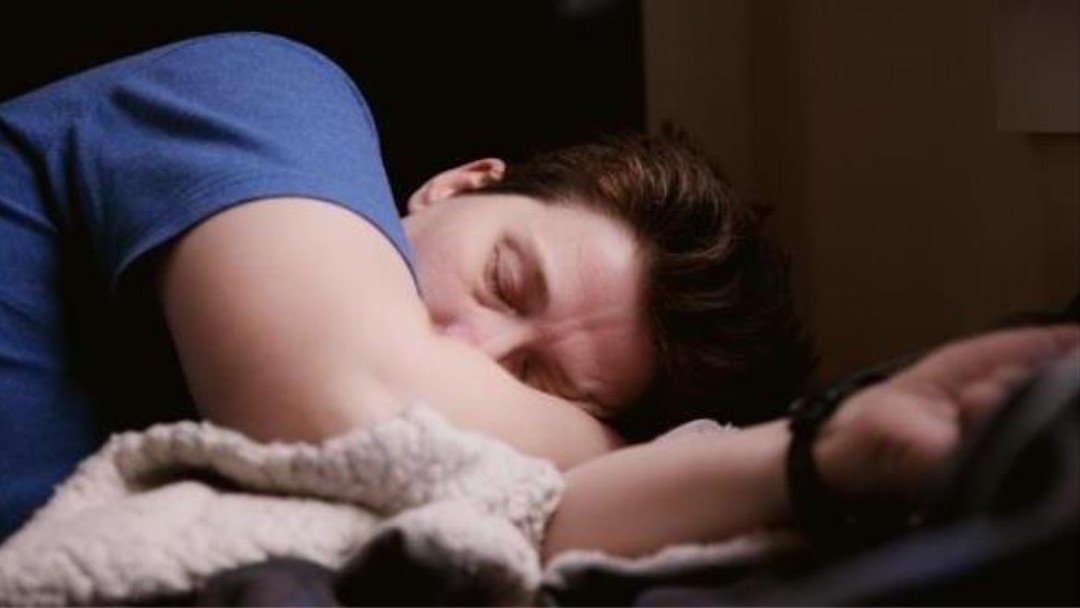How to get a new disability recognised in law

Radiation sickness sufferers are fighting to have their condition recognised as a disability, as Jessica Learmond-Criqui explains
5G has been described in exciting terms, with the ability to deliver mobile communications to every part of the UK, enabling self-drive cars to be a reality, and fridges and washing machines communicating with supermarkets to or-der more supplies.
It enables 3-second video downloads, real-time surveillance and real-time remote medical help to those in need – and other applications not yet invented.
But what does disability have to do with this thrilling new frontier? The answer is – electrohypersensitivity (EHS), a term which will be new to most people.
EHS is also referred to as radio wave sickness, microwave sickness and radiation sickness.
Reported symptoms are many and include one or more of the following symptoms (this is not an exhaustive list) ranging from dizziness, nausea and nosebleeds; memory loss, irritability, burning sensations on the skin and joint pains; to internal bleeding, difficulty breathing and cancer growth stimulation.
Among other things, it can also impact male infertility and cause problems with the individual’s sex life.
Long term exposure has been shown to have a risk factor for the diseases including Alzheimer’s, depression and neurasthenia.
So what’s this got to do with the exciting new 5G? EHS is, as it states, sensitivity (akin to an allergy) to electromagnetic radiation which is generated by mobile communications masts, antennae, wifi, mobile phones, smart meters, baby monitors and so on.
Not everyone suffers from it, however, an estimated 800,000 residents in the UK have severe symptoms and a further 2m suffer with less severe symptoms.
Many factors will influence the degree to which an individual will suffer, including the frequency of use of elec-tronic devices, the distance maintained from the source of the radiation and any pre-existing conditions that may be adversely affected by the radiation.
These sufferers do not just suffer from the radiation emitted by 5G equipment but also from equipment generating 2G to 4G. And equipment with 6G is just around the corner.
Stonewalled
Thousands of people suffering with EHS and who experience a range of adverse health impacts when they ARE around mobile communications equipment have written to the government and its agencies, their local mayors, local councils and councillors and members of parliament informing them of their condition and imploring those in positions of power to help them.
But they have been stonewalled by these organisations, who take advice from Public Health England (PHE).
PHE states that it does not recognise this condition as a disability and refuses to help them. As far as it is concerned, there is no harm caused by 2G to 5G equipment.
PHE (to be disbanded next year) is an executive agency of the Department of Health and Social Care (DHSC). The DHSC has specific statutory duties to safeguard the health and safety of the nation. But it is failing in those duties by ignoring EHS sufferers.
To come to its conclusion of no harm, PHE has not itself reviewed scientific evidence but instead adopted the guidelines set by a German charity called the International Commission of Non-Ionising Radiation Protection (ICNIRP).
However, this charity is riddled with conflicts of interest and it does not accept liability should its guidelines be inadequate.
The ICNIRP’s guidelines only apply to exposure to electromagnetic radiation for six minutes, not the ubiquitous 24/7 soup in which we and our children all swirl.
It does not accept that there are any adverse health impacts at levels below its guidelines; and considers that exposure of up to 300GHz is acceptable.
By comparison, your microwave operates at 2.5GHz. The ICNIRP does not granulate its guidelines for children, whose skulls are thinner and whose bodies are smaller so that they absorb more radiation than adults.
The guidelines are ludicrous, not fit for purpose and are dangerous. These are PHE’s standards.
Judicial review
So when the government decided to remove the requirement for planning permission for mobile masts, antennae and equipment, allowing mobile operators such as Vodafone and O2 to put up masts anywhere they want (in the hundreds of thousands, if not millions) so that they can make the data transfer time promise of 5G a reality, a severe EHS sufferer decided he’d had enough.
Phillip Watts has issued proceedings for judicial review against two government departments responsible for this decision.
One of the grounds was the failure of these departments properly to consider its ‘public sector equality duty’ (PSED) to him as a disabled person when they were making their decision.
Public authorities have a duty to eliminate differences between disabled persons (within the meaning of the Equality Act 2010 (EA)) and non-disabled persons.
In addition, when making strategic decisions such as deciding priorities and setting objectives, they must consider how their decisions might help to reduce the inequalities associated with socio-economic disadvantage, which includes health inequalities.
Discrimination
But, these departments say, we do not recognise your symptoms and condition of EHS as a disability, so the PSED does not apply in your case.
So, it behoves Watts to first scale the hurdle of showing that he is disabled as an EHS sufferer. Watts is in the public law arena by using the judicial review route.
But any person with a ‘new’ condition for which they seek the protection of the EA, including employees in the private law arena of employment law, must jump through the same hoops as Watts.
The PSED is imposed by the EA, which shows the legal ‘red card’ to disability discrimination. To be protected, one must be ‘disabled’ within the meaning of the EA, which contains a definition of what constitutes a disability.
This is followed by a detailed schedule with further descriptions and explanations of what will or will not fall under its auspices.
A disability can be physical or mental and, over many years, myriad symptoms and conditions have been presented for examination, spawning a clear body of law which readily identifies certain conditions as falling within the purview of the EA; and setting guidelines for less obvious ones.
In Watts’ case, his symptoms arise from exposure to a particular medium but the government refuses to accept that this set of symptoms can constitute a disability.
So, there are hoops which he must now jump through. Section 6(1) EA defines a disability as a physical or mental impairment which has a substantial and long-term adverse effect on the individual’s ability to carry out normal day-to-day activities.
Schedule 1 of the EA extends that to impairments which are likely to last for at least 12 months or for the rest of the individual’s life. In Watts’ case, his condition has been in existence for many years.
Government guidance on the EA helpfully provides that “the fact that an impairment may have a less substantial effect in certain environments does not necessarily prevent it having an overall substantial adverse effect on day-to-day activities”.
It lists factors which are reasonable to regard as having a substantial adverse effect on normal day-to-day activities, including “difficulty entering or staying in environments that the person perceives as strange or frightening”.
This tends to a concern about harm from electromagnetic radiation and not necessarily that one has actually suffered harm.
The PSED which the government was bound to apply before making its decision was summarised by Lord Boyd in the recent Scottish case of McHattie v South Ayrshire Council [2020] CSOH 4, which identified three important aspects:
- The duty must be fulfilled before the policy in question is enacted;
- The duty must be exercised in substance with “rigour and an open mind”; it is not a matter of ‘ticking boxes’; and
- The duty is continuing.
It does not end with the completion of the equality impact assessment (EID) and due regard must be had as policy evolves and is implemented.
Lord Boyd noted that the duties under section 149 do not simply concern the prevention of discrimination but also the promotion of policies which help “eliminate differences between the protected group and those who do not share that protection”.
He stated that, in particular, any scoping exercise should not be just a “tick-box exercise completed after the decision has been taken”.
An open mind?
In Watts’ case, the two government departments responsible for the decision to remove planning permission expressly state that they do not recognise EHS as a disability.
So, the question remains – to what extent did they consider the PSED if they did not consider that it applied to those suffering from EHS. Among other things, was their decision exercised with ‘rigour and an open mind’?
It is ultimately up to the High Court to decide whether Watts’ symptoms amount to a disability under the EA and whether the PSED has been contravened.
It will have to consider whether the public authority representatives failed to consider how to eliminate differ-ences between those suffering from EHS and those who do not.
It is hoped that the court will find in his favour, thereby providing some relief to those who suffer pain. Many of them lose their employment and their homes because of the illnesses causes by electromagnetic radiation from mobile telecoms equipment.
The Watts case will shine a light on these practices and, hopefully, create a pathway to reverse the rejection of the pain and suffering of those who experience EHS.
For ‘new’ kinds of symptoms, once medical evidence can be produced to confirm the impact of those symptoms, if the substance of the Act can then be made out, individuals can be protected by the EA and benefit from the reme-dies available for breach of the disability discrimination rules.
Litigation is always a last resort.
It is hoped that those presented with new symptoms will consider the definition of impairment under the EA at an early stage – and reach an appropriate conclusion to give relief to those who are suffering.
Jessica Learmond-Criqui is a partner at Learmond Criqui Sokel lawlsc.com
